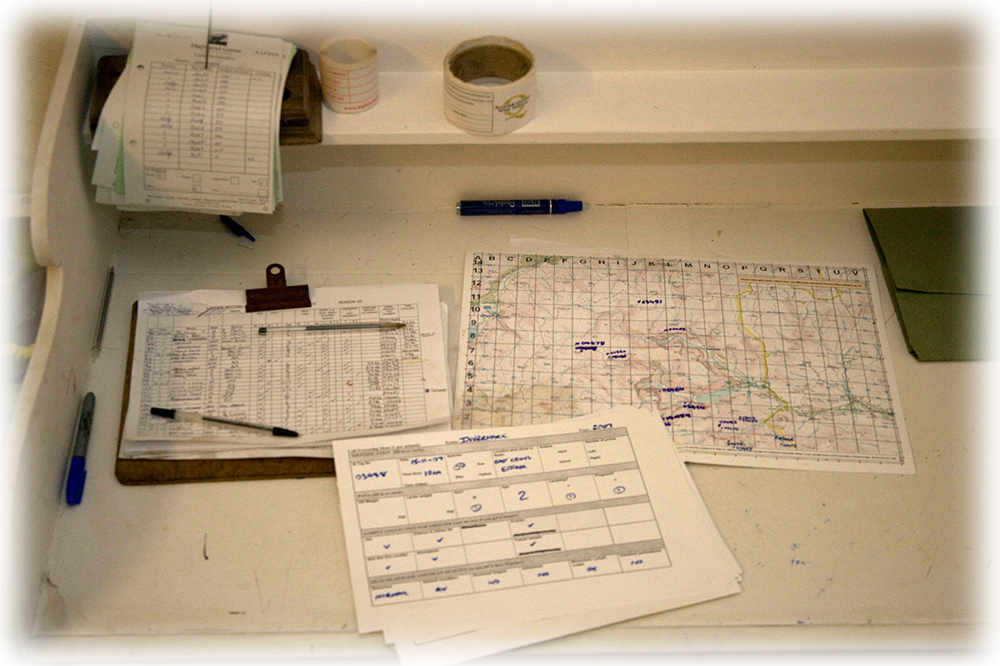
recording cull data
Introduction
The aim of this guide is to outline which cull data should be recorded, either because it may be required for legal purposes or because it contributes to the process of creating and implementing management and cull plans, either at local or landscape scale.
This guide links to the Management Plans and Cull Planning guides.
Reasons for keeping cull records
Cull (and other mortality) records are used for a number of reasons:
- Complying with legal requirements e.g. detail required for completion of AGHE tags
- Contributing to meat assurance standards e.g. HACCP based principles of venison hygiene and tracking carcass sales
- Recording cull progress against cull plans and planning future culls
- Providing information on populations, e.g. ages and performance measures such as body weight and reproductive status
- Recording natural mortality and accidental deaths such as deer vehicle collisions
Some cull data should be considered as essential, either because it is required by law for AGHE declarations and certain elements of carcass traceability, or because it has an important role in population management planning. Which additional data is recorded will depend on circumstances and should be reviewed occasionally to ensure that it is still relevant and being used for the intended purpose.
Some data may not appear to have an immediate use but if it is easy to record, do so, as it may turn out to be useful later, for instance recording a best estimate for age in years could be used for building a cohort analysis in later years.
Cull data is readily stored and analysed by computer, either in a simple spreadsheet or using commercially available software. Consider how any paper records are kept in order to make translation to a computer straightforward and less error prone.
Where carcasses are produced as the result of a collaborative cull, or where large numbers have to be recorded on the same day, extra care may have to be taken to ensure that records are kept to the required standard.
A description of the kinds of records that can be kept, together with an indication of the form in which they should be recorded and how they are used, can be seen in Table 1.
An example Deer Larder Record form can be found in the Additional Information section.
| Description | Required on AGHE declaration | Cull and management plan | Carcass traceability and HACCP | Financial | |
|---|---|---|---|---|---|
Data that should be considered essential |
|||||
| Tag Number | Unique identifying code or AGHE tag number Indication of sex ratio and female:young ratio | ||||
| Date | Date culled Possibility of sample of sex ratio and female:young ratio | ||||
| Location | As specific as possible, preferably a six figure map reference. Can be used to create cull map Possibility of sample of sex ratio and female:young ratio | ||||
| Species | Use codes e.g. Red, Fallow or Sika | ||||
| Sex | Use M, F for male, female rather than using traditional terminology (stags, bucks etc) | ||||
| Age | Use numbers for individual age classes (young =0, yearling =1 etc) or codes for age classes e.g. Y (young), YR (yearling), A (adult), O (old) | ||||
| Weight | Ensure that units, carcass preparation and timing are consistent e.g. in kilos, empty, head/feet off, skin on, 12 hours after hanging | ||||
| Inspected by | Name of “trained person” who carried out inspection to large game meat hygiene standard, requires signature on AGHE tag | ||||
| Abnormalities | Includes abnormal behaviour before culling, or any abnormalities found during inspection | ||||
Additional useful data |
|||||
| Embryo | Visual check, record as a number not a code. | ||||
| Milk | Visual check, record and a code e.g. Y/N | ||||
| Corpora lutea | Visual check by incision. Used as indicator of breeding condition in females. Not a good indicator of recruitment rates. | ||||
| Antlers | Description and score | ||||
| Kidney fat cover | Visual check, record as percentage fat cover of kidneys. Relates to animal condition | ||||
| Bullet entry/exit | Use a code according to placement. Relates to carcass value and welfare | ||||
| Shot by | Name of culler | ||||
| Destination | To whom sold or given, could be recorded as a code | ||||
Storage data |
|||||
| Time into chiller | Usually recorded on chiller record against tag number. | ||||
| Chiller temperature | Usually recorded on chiller record. | ||||